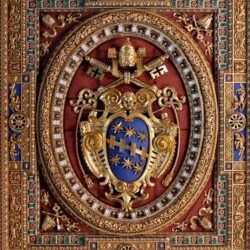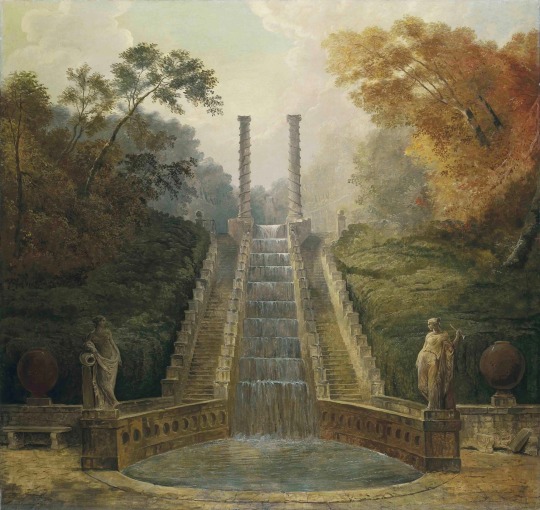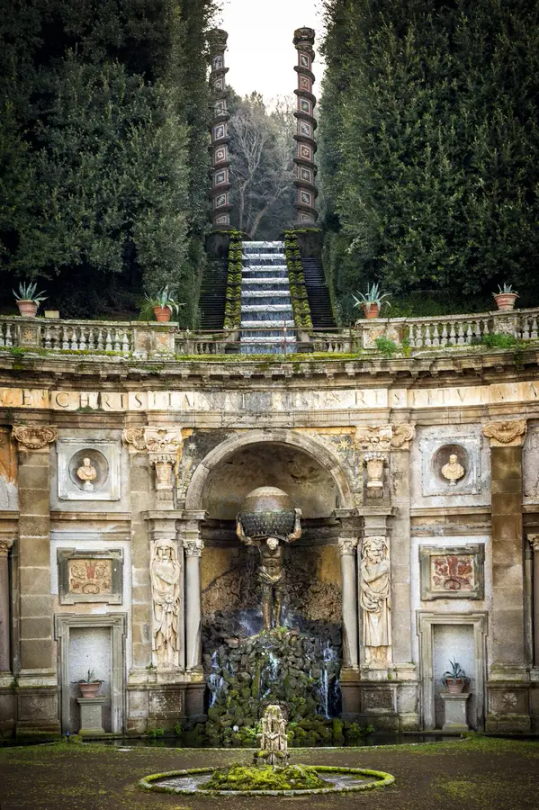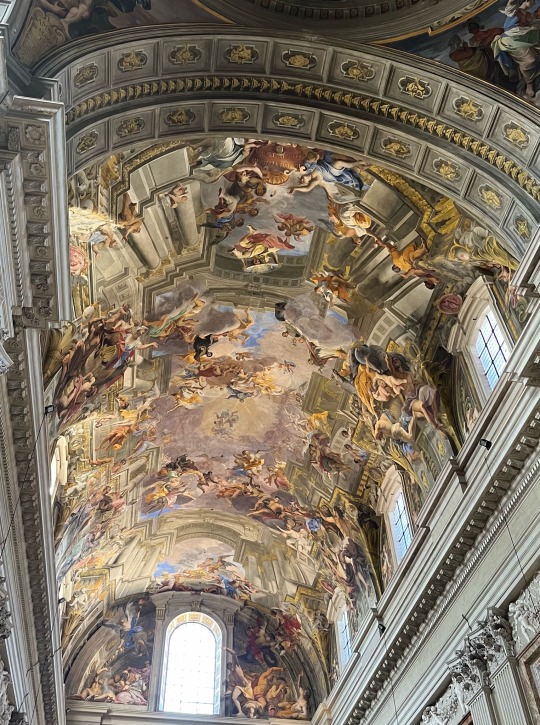#Aldobrandini
Explore tagged Tumblr posts
Text
Famiglia Aldobrandini


Aldobrandini antica nobile famiglia fiorentina, trapiantata a Roma nel XVI secolo. In seguito, si chiamarono del Papa, quando Ippolito Aldobrandini da Fano, del ramo proveniente dalle Marche (dove suo padre Silvestro si trovava esiliato con sua moglie, per i suoi sentimenti antimedicei), venne eletto Pontefice nel 1592, con il nome di Clemente VIII. Nel medio Evo, questa famiglia si divise in tre rami: i Bellincioni furono molte volte eletti alle Magistrature della Repubblica Fiorentina. A Firenze ebbe notorietà con Aldobrandino (1388 - 1453, Magistrato dei Priori (1417), fu dei sedici Gonfalonieri di Compagnia dal 1422 al 1453 (Gonfaloniere di Compagnia porta bandiera della Milizia Urbana), dei Dodici Buonomini nel: 1429 – 1436 – 1436 – 1446, commissario a Montepulciano nel 1428, Gonfaloniere di Giustizia della Repubblica Fiorentina nel 1434. Ramo Aldobrandini di Lippo (forse derivati dai Bellincioni); gli Aldobrandini di Madonna dal quale discese Ippolito poi Papa Clemente VIII. La famiglia attiva in Firenze si arricchì con il commercio. Il mercante Benci Aldobrandini sposò Giovanna “Bugiazza” nata Altoviti, chiamata così per la sua bontà e la dedizione a fare carità (in queste opere pie si unì anche il marito), si guadagnò l’appellativo di “Madonna”. La coppia da sposati, visse nelle case della famiglia in campo Corbolini (l’attuale piazza Madonna degli Aldobrandini), chiamata familiarmente dai fiorentini “Piazza Madonna”. I due coniugi unirono le loro abitazioni e proprietà. Successivamente ampliate dai loro discendenti fino ad erigere nel XVIII secolo il Palazzo Aldobradini del Papa, ancora oggi esistente. Partigiano dei Medici, fu fra coloro che richiamarono dall’esilio Cosimo, mandatovi da Rinaldo degli Albizzi. Giovanni figlio di Aldobrandino (1422- 1481) tenne la carica di Gonfaloniere della Repubblica nel 1476, distaccatosi dall’appoggiare i Medici, fu costretto a ritirarsi dalla vita politica cittadina. Nel 1480 venne inviato come capitano alla città di Sarzana dove vi trovò la morte. Salvestro (1499 – 1558), studiò legge a Pisa, avversario dei Medici, fu fra coloro che cacciarono Ippolito e Alessandro nel 1527, dando vita all’ultima Repubblica. In quel periodo ricopri la carica di primo Cancelliere alle Riformagioni. Con la caduta della Repubblica e il ritorno dei Medici, nella persona di Alessandro primo Duca, venne arrestato e esiliato a Faenza, da lì nel 1533 venne trasferito a Bibbona, da dove riuscì a fuggire trasferendosi in un primo tempo a Rome in seguito a Napoli.

Papa Clemente VIII Ippolito Aldobrandini A Napoli nel 1536, si trovava Carlo V, ospite del Viceré Don Pedro di Toledo. Si unì ad altri fuorusciti fiorentini nell’ambasceria presso l’Imperatore, per perorare le sorti della loro patria. Ma l’intento dei fiorentini non ottenne il risultato sperato, e furono costretti ancora all’esilio. Salvestro passò a Fano, Bologna, e Ferrara. In seguito, Alessandro Farnese Paolo III lo chiamò a Roma, dove in seguito fu nominato avvocato concistoriale. Ippolito suo figlio venne creato cardinale. Con l’aiuto del Farnese poté dedicarsi agli studi universitari presso le città di Padova, Perugia e Bologna. Pio V dimostrò benevolenza verso la famiglia Aldobrandini, li prese sotto la sua ala protettrice. Ippolito ebbe i titoli di: Prefetto di Castel S. Angelo, avvocato concistoriale, uditore del Camerlengo, nel 1569 uditore di Rota al posto del fratello Giovanni nominato vescovo di Imola e poi Cardinale. La nipote del cardinale Ippolito, Olimpia nata a Roma nel 1567 unica erede dei beni dei genitori Pietro Aldobrandini e Flaminia Ferracci, inquanto suo fratello Pietro venne creato cardinale dallo zio Papa Clemente VIII. Nel 1587 sposò Giovanni Francesco Aldobrandini principe di Meldola e Sarsina. Da questo matrimonio nacquero otto figli: Silvestro diventato cardinale, Margherita sposò Ranuccio Farnese IV duca di Parma e Piacenza, Elena sposò Antonio Carafa della Stadera, Giorgio principe di Meldola e Sarsina (titoli ereditati dal padre), Caterina Lesa sposò Marino Caracciolo, Ippolito cardinale, Pietro duca di Carpineto, Maria sposò Giovanni Paolo Sforza. Poi nel 1467 Olimpia sposò Camillo Pamphili. Con l’estinzione dei Pamphili beni di Margherita, passarono definitivamente ai Borghese. Con l’elezione di Ippolito a Papa, gli Aldobrandini si trasferirono definitivamente a Roma, con il dichiarato nepotismo del Pontefice, ne beneficiarono con vari titoli ecclesiastici. Per riconoscenza aggiunsero al cognome l’appellativo del Papa.

Alberto Chiarugi Read the full article
2 notes
·
View notes
Text
🩸The Black Nobility / Papal Bloodlines - Deep Dive
#illuminati#occult#conspiracy#esoterica#esoteric#mkultra#research#freebooks#library#monarch#black nobility#papal bloodlines#italian bloodlines#zoroastrian#zoroastrian bloodlines#13 bloodlines#cause before symptom#pastor james carner#james carner#the black nobility#bloodlines of the black nobility#papacyy#papacy#orsini#breakspeare#somaglia#aldobrandini#caetani#borgia#the borgias
0 notes
Text

The Cascade in the Gardens of the Teatro dell' Acqua behind the Villa Aldobrandini, Frascati
by Hubert Robert
#hubert robert#art#cascade#gardens#teatro dell'acqua#villa aldobrandini#frascati#italy#rome#lazio#europe#european#architecture#architectural#picturesque#sculptures#statues#nature#romantic#romanticism#stairs#columns#pillars#fountain#staircase#stairway#pool#villa#villas#landscape
505 notes
·
View notes
Text

The Cascade in the Gardens of the Teatro dell Acqua behind the Villa Aldobrandini (Hubert Robert, 1733 - 1808)
797 notes
·
View notes
Text

Villa Aldobrandini in Frascati, Roma, Italia.
898 notes
·
View notes
Text

Margarita Aldobrandini, Duchess of Parma by Bartolome Gonzalez, 1610-23, Spain.
59 notes
·
View notes
Text

Italian School of the 19th Century The Aldobrandini Wedding, Detail, n.d.
#italian art#italian#italy#art#fine art#european art#classical art#europe#european#fine arts#oil painting#europa#mediterranean#1800s
41 notes
·
View notes
Text
Napoleon visits Bessières' castle (1810)
Elie Baudus in the first volume of his "Études sur Napoléon" has a description of Napoleon, after he had divorced Josephine, visiting Bessières' home. That's interesting insofar as Elie argues that Bessières' close friendship with the Beauharnais family had before gotten him in trouble with his master:
For a long time Napoleon had been haunted by the distressing thought that he would leave no direct heir to succeed him in this colossal empire, the creation of his genius. The empress's age meant that it was no longer conceivable that she would bear him children, so ideas of divorce had been on his mind since 1807. Some rumours about this project were spread during the trip he made to Italy shortly after returning from Tilsitt.
This journey to Italy happened not quite that shortly after Tilsit, actually, but only in late 1807 (November/December). At the same time as the preparations for the coup in Spain, by the way.
Marshal Bessières, who would always accompany him on such occasions, had been left in Paris to await the return of the guard, to lead it when it made its triumphal entry, to receive the celebrations that the capital intended to offer to these elite legions, and to preside over those that the guard was to give. The Marshal was very attached to the Beauharnais family. General Bonaparte, doing justice to Bessières' perfect manners and the noble qualities that distinguished him, had given him as a mentor to Eugène during the Egyptian campaign. After 18 Brumaire, this young man, in his capacity as colonel of the Guides, who had become the chasseurs à cheval of the consuls' guard, again found himself under the command of Bessières. The Marshal therefore learned with chagrin of the rumours that were spreading. Having acquired the certainty that the police were not uninvolved, he committed the noble imprudence of listening only to his initial impulse, went straight to Fouché, and confronted him with a very heated argument on the subject. His intimate conviction was, first of all, that the divorce would be an impolitic act; after that, he believed that the Emperor's attachment to Josephine was such that no consideration could decide him to pronounce it, and that consequently this prince had nothing to do with these manoeuvres.
When Napoleon returned, the Marshal was quickly proven wrong; the Emperor welcomed him coldly and immediately removed him from court by sending him to take up a command in Spain. The almost constant disfavour with which he was treated for several years proved to him that if Fouché had taken it upon himself to spread such rumours, at least he had not been disagreed with. Marshal Bessières was in South Beveland when the dissolution of Josephine's marriage to the Emperor was announced. On arriving in Paris in January 1810, he hastened to Malmaison to court the repudiated empress, and continued to be a regular visitor. Far from resenting him, the emperor seemed, on the contrary, to return some of the favour he had once shown him; he even chose this moment to spend two days at the Château de Grignon, owned by the marshal.
We have only had this one opportunity to see the emperor in his private life; we are going to recount how these two days passed. The character he displayed during these two days is quite unusual; besides, isn't everything of interest in the life of such a man?
Napoleon arrived at Grignon in the morning; his entourage was numerous; the King of Bavaria accompanied him, as well as the Queens of Naples and Holland and the Grand Duchess of Baden; then came the Prince de Neufchâtel, Grand Marshal Duroc, Marshals Moncey and Davoust, General Lauriston, Prince and Princess Aldobrandini Borghese, an equerry, a chamberlain, some officers of the hunt, the Duchesses of Bassano and Cassano, Madame de Broc and Mademoiselle de Mackau. When he got out of the carriage he went hunting; the park was very large and contained a lot of game; there was even a very fine pheasantry.
The emperor killed a large number of pheasants and partridges, but missed almost as many. Every time he fired his rifle, a hunting officer, standing next to him, whether the game fell or not, would still say "Broken wing, dangling thigh". Napoleon, who had misfired several times in succession, became impatient with this eternal refrain, and said at the last mention of a broken wing: "Well, go and fetch it". This order would have been difficult to carry out, because the bird was flying away. The clumsy courtier complied willingly and replied: "That's right, Sire, I was mistaken". After hunting for a few hours, the emperor retired to the appartment that had been prepared for him, and did not reappear until a few moments before dinner.
We do not know what whim had passed through the imperial mind, but Napoleon was already at table when he realised that he had forgotten to invite to dinner with him la Maréchale Duchesse d'Istrie, who had the honour of receiving him at her home, and, far from compensating her later for this singular distraction, he showed himself to be in a detestable mood towards her. Wanting to play the little game known as "le furet du bois joli", a piece of ribbon was needed; this was requested from Madame la Maréchale, who unfortunately did not have one in her possession; she enquired of all the other ladies to obtain it: Princess Aldobrandini was the only one who could provide her with this service. All these enquiries had taken a long time; so the emperor said to the maréchale, who presented it to him: "Since the time you have kept me waiting, you should have cut up all your dresses." - "Sire," replied this excellent woman, "if I had done so, it still would not have given you a single piece of ribbon." - We have never been able to find out the reasons for this rude behaviour on his part towards a woman of admirable and well-deserved reputation, who, sharing the Marshal's noble feelings, had not waited for his return to Paris before going to bring consolation to the august banished woman of Malmaison.
In the evening, the Marshal presented his aides-de-camp to the Emperor, who said to him on seeing the youngest: "Isn't it that little chap, Bessières, who, on the road to Wels, came to give me an inaccurate report about the direction you had made the cavalry take?" Despite the Marshal's protests, assuring him that the officer he was referring to was not at Grignon, he persisted for a long time in blaming this young man for the unfortunate blunder which was so close to his heart. In any case, he was only mistaken about the face of the culprit, for the fact was correct.
Afterwards there was dancing; everyone took part, whether they liked it or not, in this kind of entertainment, even the King of Bavaria, to whom the emperor said rather brusquely: "King of Bavaria, dance". And this monarch, then aged fifty-five, with a roundness that must have made this exercise very painful for him, hastened to take a dancer and place himself at one of the quadrilles. However, Napoleon had no grudge to satisfy against this sovereign at the time, so it did not occur to him to imitate our good Henry IV, who quickly made the king of the League, the Duke of Mayenne, walk through his park of Monceaux in revenge for the embarrassments the latter had caused him. But that was how Napoleon treated his vassal kings. No one, moreover, escaped his singular fantasies in this regard; the hero of Auerstædt and Ekmülh, whose appearance and manners were not particularly suited to this kind of pleasure, was also obliged to take part.
Though Davout apparently loved to waltz. It may just have been the wrong dance for him.
Not even the old duchess of Cassano, lady-in-waiting to the queen of Naples, who vainly objected to the dancer Napoleon sent her that she had given up dancing thirty years ago; she had to appear in a quadrille: the emperor wanted it that way. The public was not misled when it was said that the tune of Monaco was the one he preferred to any other, for it was repeated every time the emperor danced. The evening ended with the figure known as le grand-père.
Apparently Napoleon spent a good night because his attitude seems to have changed completely the next morning:
The day passed in much the same way as the day before, with the difference that Napoleon was constantly friendly to everyone and surprisingly cheerful for a man whose mind was always occupied with serious matters. The next day, at eight o'clock in the morning (it was winter at the time), it was unexpectedly announced that the emperor was leaving for Rambouillet; all the ladies who were travelling were obliged to throw themselves into the carriage, having barely had time to put on a dress. This sudden awakening, this lack of toiletries, did them no favours; there were only a few among them whose beauty, already tired by too many vigils, nevertheless triumphed over this harsh ordeal; we will mention the Queen of Naples, Madame de Broc and Princess Aldobrandini.
36 notes
·
View notes
Photo

Santiago Rusiñol (Spain 1861-1931)
Villa Aldobrandini
283 notes
·
View notes
Text

The Aldobrandini Wedding, Italian School, 19th Century
22 notes
·
View notes
Photo


1493-1496 Domenico Ghirlandaio and workshop - Altarpiece of St. Vincent Ferrer (with St. Sebastian and St. Rocchus; at his feet : Pandolfo IV Malatesta and his mother Elisabetta Aldobrandini, his wife Violantre Bentivoglio and his brother Carlo)
(Museo della Città, Rimini)
83 notes
·
View notes
Text





















Lo Spettacolo della Moda Emilio Schubert
Bonizza Giordani Aragno
Beppe Modenese
Fondazione Mondragone, Napoli 2004, 210 pagine, 21x26,5cm,
euro 50,00
email if you want to buy [email protected]
Bonizza Giordani Aragno è una studiosa del costume e della moda contemporanea.
La prima mostra italiana dedicata allo stilista partenopeo, curata da Bonizza Giordani Aragno, si inaugura al Museo del Tessile e dell'Abbigliamento "Elena Aldobrandini" (Fondazione Mondragone-Polo Regionale della Moda Femminile), giovedì 8 luglio 2004 fino al 20 ottobre 2004
Si è potuto ammirare cinquanta abiti-spettacolo dallo stile assurdo e onirico: segni, riferimenti psicoanalitici di una società che voleva esorcizzare la follia dopo la violenza della guerra. Schuberth scelse di eludere i recenti orrori attraverso un divertito ma sempre consapevole abbandono alla frivolezza e alla lussuosità dello spettacolo. Fu lui, infatti, a vestire le attrici più importanti del teatro e del cinema italiano: Valentina Cortese, Sophia Loren, Gina Lollobrigida, Ingrid Bergman, Anna Magnani, Delia Scala, Wanda Osiris, Alida Valli, Silva Koscina, Silvana Pampanini.
The first Italian exhibition dedicated to the Neapolitan designer Emilio Federico Schuberth (1904-1972) was organized by the Mondragone Foundation's Fashion Museum (Piazzetta Mondragone 38). Set up to celebrate the centenary of the birth of the designer, Schuberth is famous for designing fashion for actresses of Italian theater and cinema such as Valentina Cortese, Sophia Loren, Gina Lollobrigida, Ingrid Bergman, Anna Magnani, Delia Scala, Wanda Osiris, Alida Valli, Silva Koscina, and Silvana Pampanini. The exhibition includes fifty garments, accessories such as hats, shoes, bijoux, bags, gloves, sketches and a collection of images and articles of the era
27/05/25
#Spettacolo della moda#Bonizza Giordani Aragno#mostra Fondazione Mondragone Napoli 2004#Emilio Schubert#fashion exhibition catalogue#fashion books#fashionbooksmilano
2 notes
·
View notes
Text

Anonymous
Possibly Sappho and her companions (possibly after an Antique fresco "The Aldobrandini wedding"), 18th century, oil on canvas, 51x136 cm
National Trust Collections Inv. 732277
3 notes
·
View notes
Text

Título: Cristo apareciendo a San Pedro en la Vía Apia (Domine, Quo Vadis?) Artista: Anibal Carracci Fechas de artistas: 1560 - 1609 Fecha de realización: 1601-2 Medio y soporte: Óleo sobre madera Dimensiones: 77,4 × 56,3 cm crédito de adquisición: Comprado, 1826 Numero de inventario: NG9
San Pedro huyó de Roma después de la crucifixión de Cristo, temeroso de que él también fuera ejecutado por los romanos; aquí, se encuentra en estado de shock cuando Cristo pasa junto a él en el camino. Cuando Pedro le preguntó a Cristo adónde iba, la pregunta que da título a este cuadro respondió que se dirigía a Roma para ser crucificado de nuevo. Avergonzado, Pedro se dio la vuelta para enfrentarse a su propio martirio. El incidente se describe en la Leyenda Dorada, una compilación del siglo XIII de las vidas de los santos.
Es casi seguro que esta pintura devocional privada fue encargada a Annibale Carracci por el cardenal Pietro Aldobrandini, cuyo nombre santo era Pedro. A pesar de las dimensiones relativamente pequeñas del panel, su efecto es muy monumental y la imagen es característica del estilo clásico tardío de Carracci.
Información e imagen de la web de la The National Gallery of London.
17 notes
·
View notes
Text

The Aldobrandini Wedding is a 1st century BCE fresco discovered in 1604. It was found near the ceiling of a house near the Arch of Gallienus on the Esquiline Hill in Rome. It is currently housed in the Vatican Museum.
15 notes
·
View notes
Text

Andrea Pozzo - Roma Sant’Ignazio di Loyola - Apoteosi di Sant’Ignazio - 1694
I conflitti religiosi che nel Cinquecento avevano visto una composizione con la Pace di Augusta in cui Carlo V aveva accettato il principio del “cuius regio eius religio” sfociano nel Seicento in due tendenze contrapposte:
- le meraviglie del Barocco e le opere della Controriforma cattolica;
- l’ampio scenario della Guerra dei Trent’Anni.
La Guerra dei Trent’Anni può essere riassunta lungo queste tappe:
- 1594 - Enrico IV Borbone, convertendosi al Cattolicesimo, Re di Francia
- 1598 - Morte di Filippo II
- 1603 - Morte di Elisabetta I
- 1618 - i rappresentanti dell’imperatore cattolico Ferdinando II d’Asburgo, che cerca di creare uno stato moderno, vengono defenestrati dai protestanti boemi
- 1620 - Sacro Macello dei protestanti in Valtellina
- 1624 - Richelieu Primo Ministro
- 1628 - il generale boemo Wallenstein, al servizio degli Asburgo, sconfigge l’esercito danese
- 1631 - il candidato francese al Ducato di Mantova e del Monferrato Carlo I Gonzaga - Nevers prevale, anche grazie all’abilità diplomatica di Mazzarino, sul candidato sostenuto dagli Asburgo di Spagna e dai Savoia dopo la guerra del Monferrato in cui dilaga la peste raccontata nei Promessi Sposi. Nello stesso anno l’Impero saccheggia Magdeburgo, città alleata degli Svedesi
- 1642 - Mazzarino succede a Richelieu
- 1643 - i Francesi, guidate dal Duca d’Enghien (poi Principe di Condè) sconfiggono gli Spagnoli a Rocroi. Luigi XIV Borbone Re di Francia
- 1648 - Pace di Westfalia. Fine del conflitto in cui si profila la leadership francese sull’Europa: gli Asburgo si concentrano sui possedimenti propri (Austria e Ungheria) anziché sull’Impero;
- 1649 - Carlo I Stuart decapitato in Inghilterra
Il Seicento, secolo in Italia di decadenza politica ed economica, è però anche il secolo di Carlo e Federico Borromeo e del Barocco ispirato dalla Controriforma i cui eventi principali sono:
- 1534 - Alessandro Farnese, fratello di Giulia, amante di Alessandro VI Borgia, eletto Papa Paolo III. Approvazione della Compagnia di Gesù
- 1542 - Paolo III istituisce l’Inquisizione
- 1545 - Concilio di Trento: accentramento del potere papale, importanza delle opere e non solo della grazia, formazione del clero, impegno pastorale
- 1566 - Michele Ghislieri eletto Papa Pio V, il Papa che raccoglie la Lega che vince a Lepanto nel 1571
- 1572 - Il bolognese Ugo Boncompagni eletto Papa Gregorio XIII, promotore non solo del calendario gregoriano, ma anche di importanti iniziative religiose, pastorali e culturali. Nel 1580 viene inaugurato il Quirinale
- 1589 - Fontana del Mosè sotto il pontificato di Sisto V che fa erigere obelischi e migliorare il tessuto urbanistico dell’Urbe: è il modello della “Ecclesia triumphans” dopo il contrasto alle eresie dei decenni precedenti
- 1592 - Clemente VIII Aldobrandini Papa
- 1600 - Cappella Contarelli a San Luigi dei Francesi (Caravaggio). Giordano Bruno al rogo a Campo dei Fiori, decapitata Beatrice Cenci
- 1605 - Camillo Borghese eletto Papa Paolo V. Cappella Cerasi in Santa Maria del Popolo (Caravaggio)
- 1612 - Carlo Maderno inaugura la nuova facciata di San Pietro
- 1623 - Maffeo Barberini eletto Papa Urbano VIII
- 1626 - Baldacchino di San Pietro (Bernini)
- 1633 - Abiura di Galileo
- 1651 - grazie alla mediazione di Olimpia Maidalchini, Innocenzo X Pamphili affida al Bernini la Fontana dei Fiumi che completa Piazza Navona
- 1652 - Estasi di Santa Teresa a Santa Maria della Vittoria (Bernini)
- 1655 - Fabio Chigi eletto Papa Alessandro VII
- 1657 - Colonnato di San Pietro (Bernini)
- 1660 - Sant’Ivo alla Sapienza (Borromini)
- 1667 - Oratorio dei Filippini (Borromini), Santa Maria della Pace (Pietro da Cortona)
Terminato lo slancio mecenatistico dei pontefici, l’Apoteosi di Sant’Ignazio con la finta cupola commissionata ad Andrea Pozzo dai Gesuiti segna nel 1694 la fine del Barocco a Roma.
5 notes
·
View notes